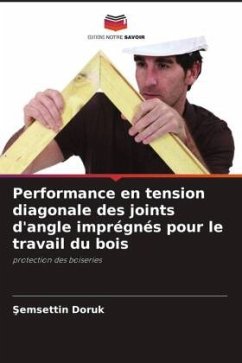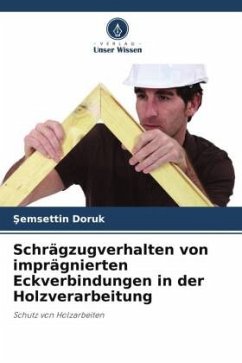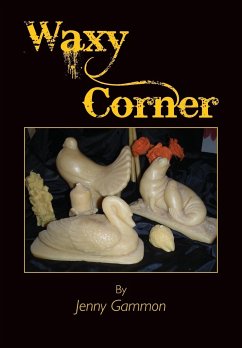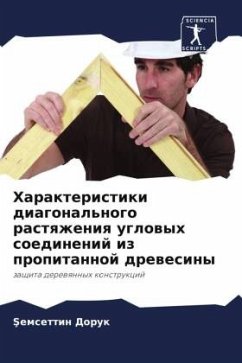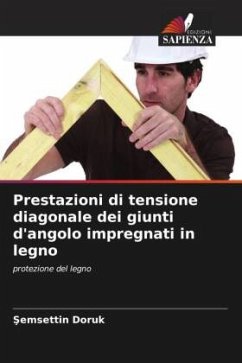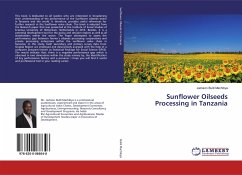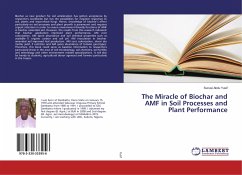
Diagonal Tension Performance of Impregnated Woodworking Corner Joints
protection of woodwork
Versandkostenfrei!
Versandfertig in 6-10 Tagen
29,99 €
inkl. MwSt.

PAYBACK Punkte
15 °P sammeln!
In this study, effects of wood types, processing types and processing time to performance of diagonal tension performance on the wood Works corner joint with double tenon and mortise were examined. Test samples were prepared by using Scots Pine (Pinus sylvestris Lipsky), Sessile Oak (Quercus petreae Lipsky) and Black locust (Robinia pseudoacacia L.). Polyvinyl acetate (PVAc) adhesive were used to join the tenon and mortise corner joints. The samples were impregnated by using immersion method 20, 40 min with mixture of wax / linseed oil (3 % paraffin, 10 % linseed oil, 87 % white spirit) and Im...
In this study, effects of wood types, processing types and processing time to performance of diagonal tension performance on the wood Works corner joint with double tenon and mortise were examined. Test samples were prepared by using Scots Pine (Pinus sylvestris Lipsky), Sessile Oak (Quercus petreae Lipsky) and Black locust (Robinia pseudoacacia L.). Polyvinyl acetate (PVAc) adhesive were used to join the tenon and mortise corner joints. The samples were impregnated by using immersion method 20, 40 min with mixture of wax / linseed oil (3 % paraffin, 10 % linseed oil, 87 % white spirit) and Imersol-Aqua. The test of diagonal compression was used to test 120 samples. In this study, the minimum strength decrease around 68% was obtained by Scots Pine impregnated by Imersol-Aqua for 40 min and the highest strength increase was obtained on sessile oak samples around 10 % with impregnated Imersol-Aqua for 40 min. The highest diagonal tension performance was obtained on oak samples by 879.734 Nm with the Imersol-Aqua that was impregnated 40 min., the lowest diagonal tension performance was obtained on Scots Pine samples by 189.111Nm that impregnated 40 min white Imersol-Aqua.



